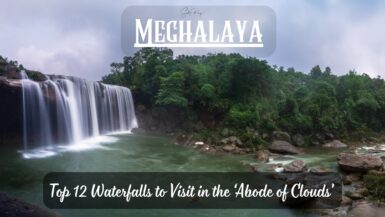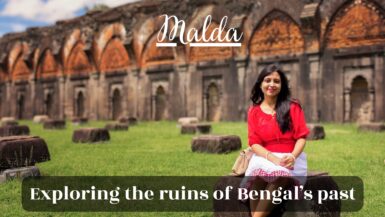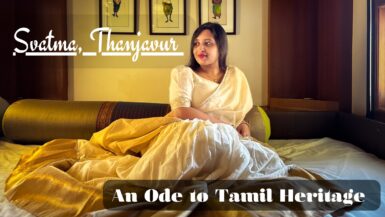The skyline of Mysuru is dominated by the resplendent Amba Vilas Palace, more popularly known as the Mysore Palace. Situated amidst a manicured lush lawn, the Palace is synonymous with magnificence, enticing visitors since its inception. Richly decorated with elaborate columns, pilasters, and arches, the Palace casts its spell on the guests right from the very first sight. It is one of the most popular tourist attractions of India and comes only second after the Taj Mahal in terms of volume of annual visitors. It is also highly ranked among the Palaces around the globe.

Table of Contents
Where is Mysore Palace located:
The eponymous Palace is located in Mysuru, Karnataka. Mysuru has a total of seven palaces including this Palace, and hence known as the ‘city of palaces’.
History of Mysore Palace:
The Mysore Palace is the royal residence of the Wodeyar dynasty who claim descent from the Yadava clan of Shree Krishna. Yaduraya is generally regarded as the founder of the Wodeyar dynasty. He attained prominence in Mysuru and enjoyed a fiefdom under the Vijayanagara Empire. With the disintegration of Vijayanagara after 1565, the Wodeyars declared independence under Timmaraja Wodeyar II. The Wodeyars extended their dominance far and wide until the British subdued them through the Subsidiary Alliance. With India’s independence in 1947, the Wodeyar monarchy was abolished.

The present structure of the Mysore Palace is the fourth to occupy this site. The original structure dates back to the 14th century. Previously, it was made of wood which was demolished owing to a fire during the wedding of a Wodeyar princess. The Queen Regent Kempananjammanni Devi undertook the herculean task of rebuilding the Palace and restoring it to its former glory. She commissioned renowned British architect Henry Irwin to build a new Palace. The construction was completed in 1912 at a cost of around INR 42 lakhs.
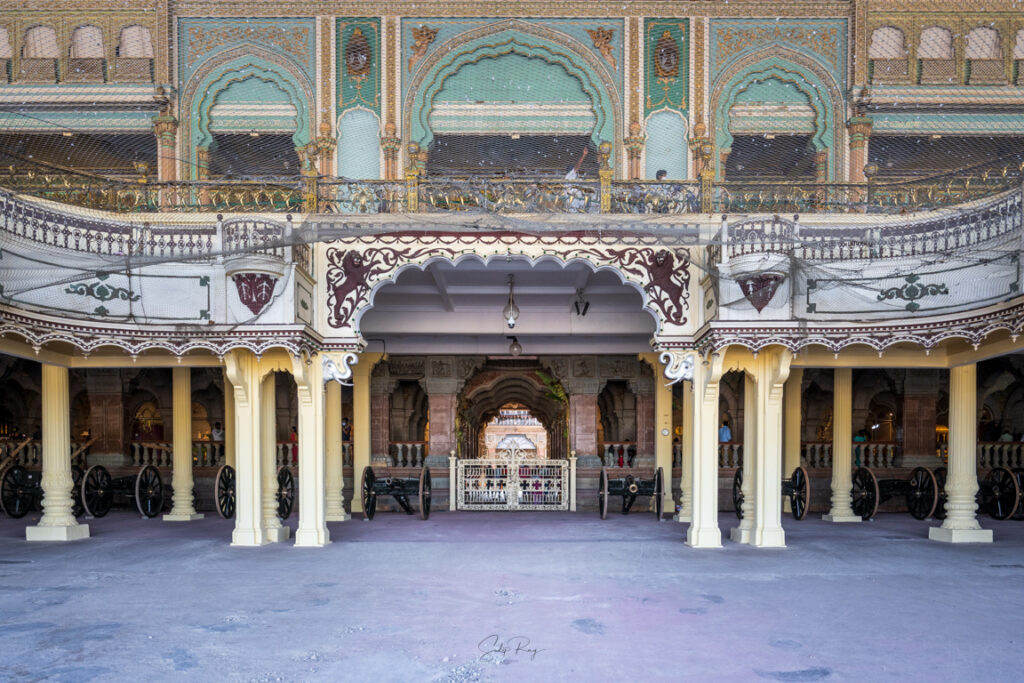
The present Mysore Palace is an exceptional specimen of the Indo-Saracenic style of architecture. It combines Mughal (evident from the domes) and Rajasthani (exemplified by the arches and pavilions) styles as also European forms (characterised by stained glasses, windows and floors). The three-storied Palace faces the Chamundi Hills, the abode of the Goddess Chamundi who is the principal deity of the Wodeyars.

The Mysore Palace is comprised of 3 gates (East or Ane Bagilu or Elephant’s Gate used solely for VVIP entrance, South Gate, and West Gate), 12 temples, and a 5-storied watchtower. Its length is about 245 feet while its breadth is 156 feet.

During the Dasara celebration as well as on Sundays and Public Holidays, the Palace is illuminated with 97,000 electric bulbs.

Major attractions of the Mysore Palace:
The Mysore Palace is a pleasant labyrinth, decked up in fascinating artefacts, paintings, Durbar Halls, and so on. We have listed here the important attractions inside the Palace –
The Dolls’ Pavilion:
The Gombe Thotti or Dolls’ Pavilion exhibits an array of dolls, which are traditionally displayed during the Dasara festivities. The gallery exhibits many European and Indian sculptures as well as ceremonial objects, such as the Golden Howdah known as ‘Ambari’, a wooden pavilion decorated in Rajasthani mirror work, and Ganesha playing Veena.
Paintings of Dasara Parade:
The Wodeyars commissioned some of the finest painters of Karnataka to depict the grandeur of the Dasara Parade. A total of 26 fantastic panels of artwork were created based on actual photographs. They were done between 1934 to 1945.
Kalyana Mantapa:
This lavish octagonal-shaped hall was meant for the celebration of royal weddings, birthdays, and other ceremonial functions. The Kalyana Mantapa is characterised by a vibrant stained glass ceiling, green and gold columns and cornices, and peacock motifs in geometric patterns. The floor is also furnished with peacock-themed mosaic tiles which were made in England. The design of the glass and framework was devised by Indian artists and manufactured in Glasgow, Scotland. Also, a dazzling chandelier hangs from the central dome which further enhances the beauty of the Kalyana Mantapa.

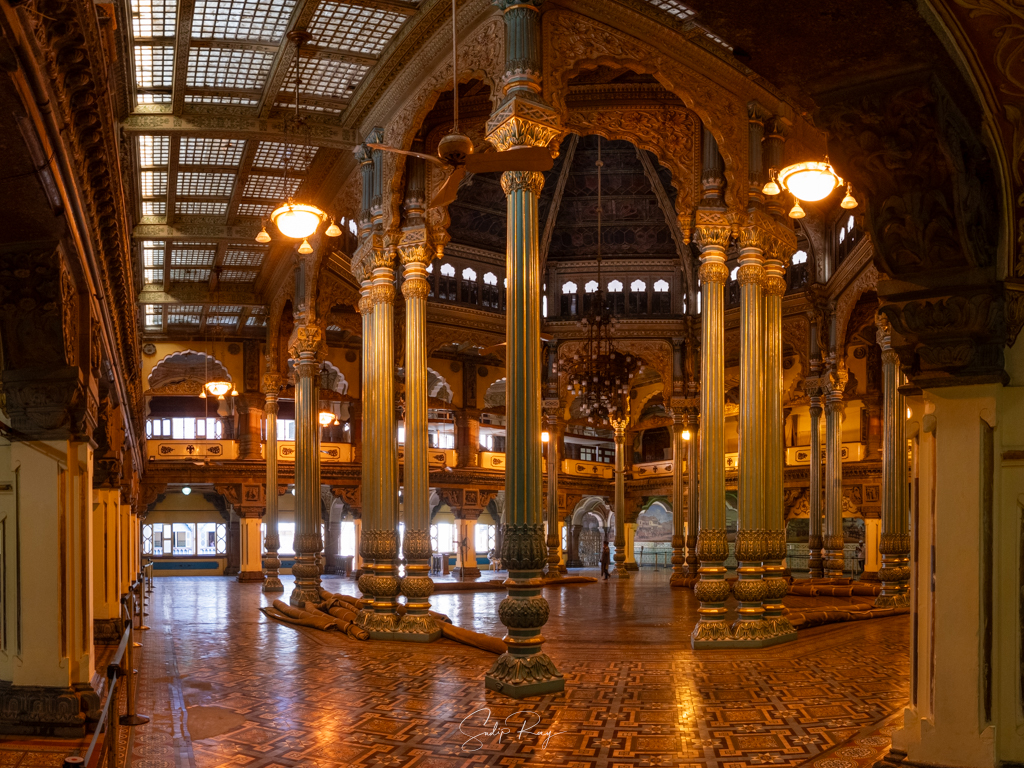
Portrait Gallery:
A little ahead of the Kalyana Mantapa there lies the portrait gallery, where paintings and photographs of the members of the royal family are exhibited. It also showcases two works of the eminent painter, Raja Ravi Verma. Of particular interest are the portraits of Krishnaraja Wodeyar IV (who was also the first Wodeyar ruler to live in this palace) and the wedding painting of Jayachamaraja Wodeyar with a Bundeli princess.
Casket Room:
This unique gallery displays lots of caskets that the Wodeyar kings received as gifts from their subjects while visiting parts of their kingdom. Most of these caskets are made from sandalwood, and a few from silver and ivory.
Painting Gallery of Dasara Celebration:
Next comes the gallery displaying marvellous paintings of Goddess Chamundi and the Wodeyar kings celebrating and participating in Dasara processions.
Wrestling Courtyard:
The Wodeyar dynasty was a great patron of wrestling. The ‘Jetty’ wrestlers who performed ‘Vajramushti’ were favoured by the Mysuru kings. Wrestling was organised in this courtyard during Dasara and other festivals.

Gallery of Royal Furniture:
The splendid furniture and coats of arms used by the members of the Wodeyar family are put on public display inside this gallery.
Durbar Hall:
This is one of the most popular sections of the Mysore Palace. The Durbar Hall is characterised by green and gold arches decorated with delicate floral filigree, and ornately carved and opulently decorated columns. Also, the ceiling is embellished with fine stucco art, which portrays Brahma, Vishnu, and Shiva being surrounded by the twelve zodiacs. There are also a handful of oil paintings here, the most important one being the Sita’s Swayamvar by Raja Ravi Verma. This Durbar Hall was not part of the Palace’s original plan and was added much later in 1938. The Wodeyar kings used this Hall to hold an audience with their ministers and subjects.
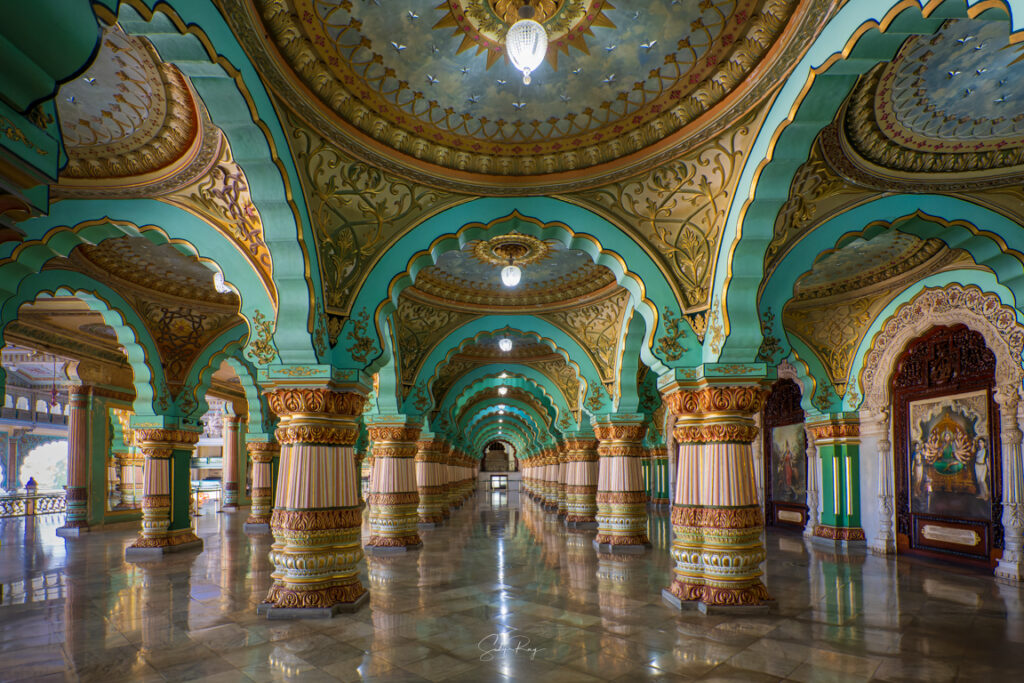

Amba Vilas Durbar Hall:
The private Durbar Hall, also known as Amba Vilas Durbar Hall, is arguably the grandest section of the Mysore Palace. The Wodeyar kings used it to hold private meetings with their courtiers. The predominant theme of this Durbar Hall is blue and gold. It is extravagantly adorned with pillars made of gold and arches graced with exquisite gold filigree works. The floor in between the columns is made of marble and inlaid with semi-precious gems. This was the handiwork of the ‘pieta dura’ craftsmen of Agra. The roof of this Durbar Hall is made of teak while floor-kissing chandeliers add to its exuberance.
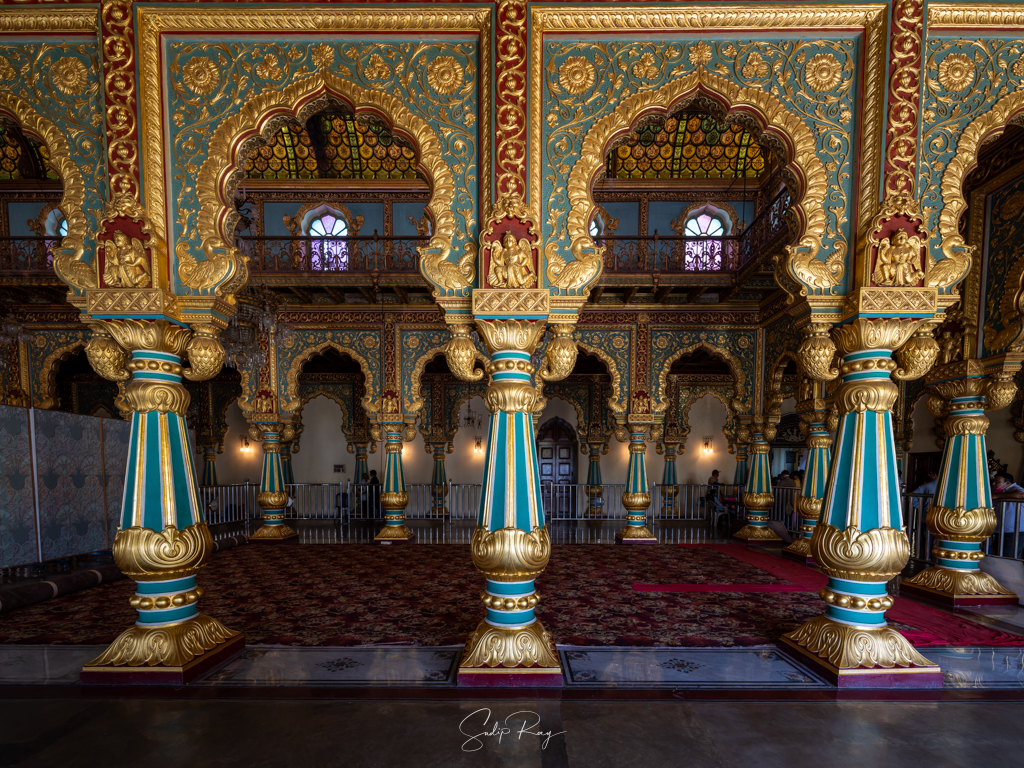

Hallway of Doors:
The Amba Vilas Durbar Hall leads to a Hallway of Doors. The passageway has several artistic doors made of rosewood and one door made of silver. Most of these doors were salvaged from the incinerated wooden palace. They are solely meant for ornamentation and do not lead to any room.
Temples inside the Mysore Palace:
There are as many as 12 temples inside the premises of the Mysore Palace. Some of the important ones are Shree Lakshmiramana Swami Temple (regarded as the oldest temple of Mysuru), Sweta Varahaswami Temple, Bhuvaneshwari Temple, Venkataramana Swami Temple, Kodi Bhairavaswami Temple, Trinayaneshwara Shiva Temple, Prasanna Krishnaswami Temple, and Gayatri Temple.
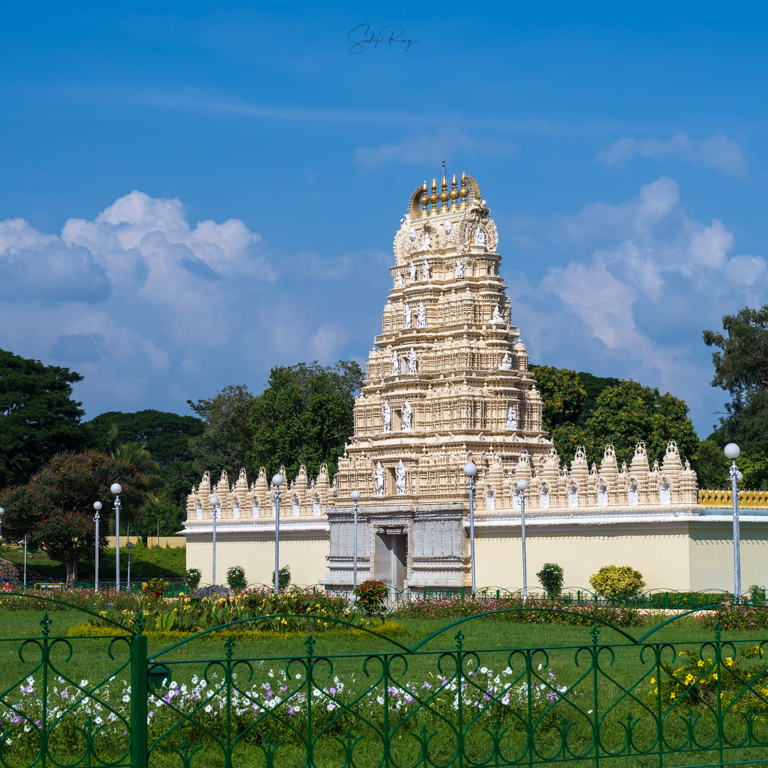
Important FAQs:
What is the timing of Mysore Palace?
The Mysuru Palace remains open every day from 10 AM to 5-30 PM.
Through which gates can the public enter the Palace?
Public entrances are allowed only through the ‘Varaha’ Gate in the west and the ‘Amba Vilas’ Gate in the south.
What are the ticket prices for entering Mysore Palace?
For adults (Indian and foreigners alike), the ticket is INR 100. For children above the age of 10, the ticket is INR 50. Tickets are issued near the entry gate.
What are the illumination timings of the Palace?
The Mysore Palace is illuminated on Sundays and public holidays from 7 PM to 8 PM.
What is the schedule of the Light and Sound program held at the Palace?
The Light and Sound show is held every day except Sundays and public holidays. It is available in both Kannada and English languages. You can watch the English show from Thursday to Saturday from 7 PM to 8 PM. Ticket prices for the English show are INR 120 for adults (both Indians and foreigners alike) and INR 50 for children. The Kannada version is available from Monday to Wednesday from 7 PM to 8 PM. It can also be seen on Saturday from 8-15 PM to 9-15 PM. Ticket prices for the Kannada show are INR 100 for adults (both Indians and foreigners alike) and INR 40 for children.
Extra information regarding the Light and Sound program:
A 15-minute illumination of the Mysore Palace can be seen after the Light and Sound show ends. Tickets are issued after 6-30 PM only from the ‘Varaha’ gate. No refund is issued in case the show stops midway owing to rain or any other reason.
What are the other facilities provided inside the Mysore Palace?
- Braille guide for visually challenged guests.
- Free wheelchair facility for the sick and otherwise disabled.
- Free storage for footwear as shoes are not allowed inside the Palace.
- Free cycling facility for tourists who want to cycle around the gardens and temples.
- Free umbrella facility for tourists for protection from rain.
- Free BSNL wifi inside the Palace premises.
- Hygienic toilets and drinking water facilities.
- Health kiosks and baby care centres inside the Palace premises.
- Parking is available for tourists at ‘Varaha’ and ‘Amba Vilas’ gates.
- Government-approved guides are also available.
Is photography allowed inside the Mysore Palace?
At present, photography without flash is allowed inside the Mysore Palace.
What is the best time to visit Mysore Palace?
Since Karnataka remains quite hot in the summer months, try visiting Mysore Palace in the winter months (November to February). Also, avoid the weekends and public holidays due to the huge rush of tourists.
How can I reach Mysuru?
Mysuru has a domestic airport which is well-connected with Bengaluru, Chennai, Hyderabad, and Mumbai.
You can also avail trains from Bengaluru to reach Mysuru. You can opt for 20607 Vande Bharat Express, 12007 Shatabdi Express, 16231 Mysuru Express, 16021 Kaveri Express, and 20624 Malgudi Express.
Where can I stay in Mysuru?
You can stay at Hotel Lalitha Mahal Palace, Hotel Maurya Palace, and KSTDC’s Mayura Hoysala Mysuru.

